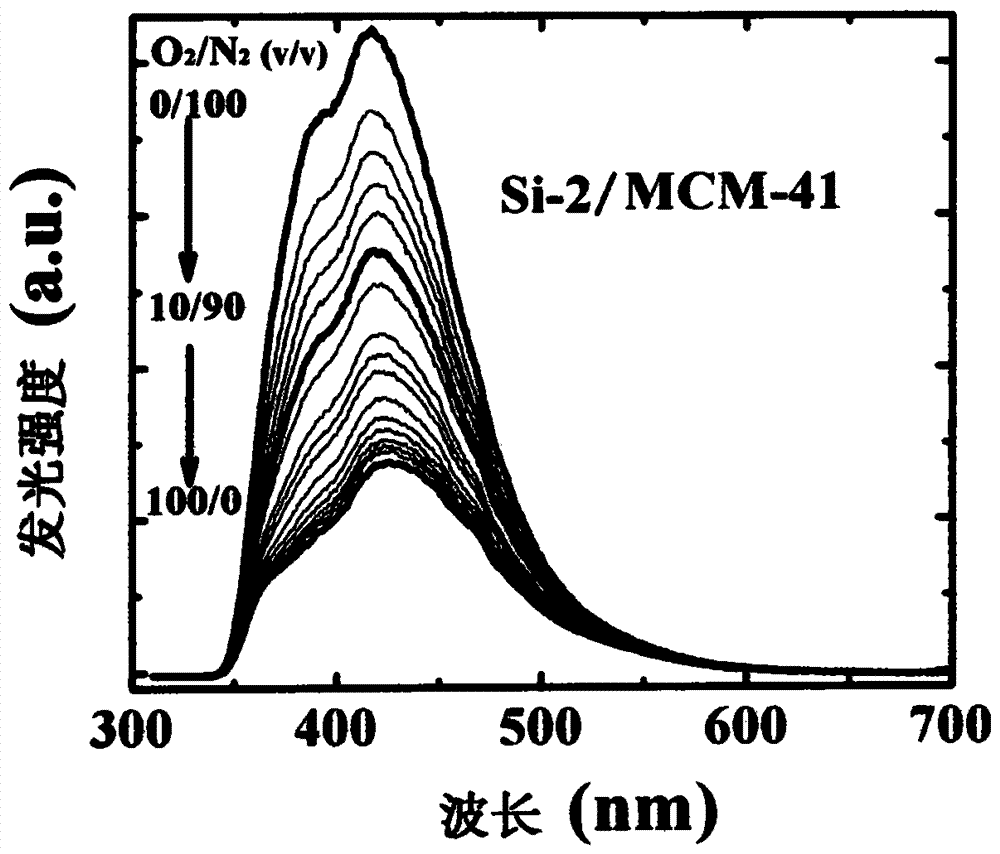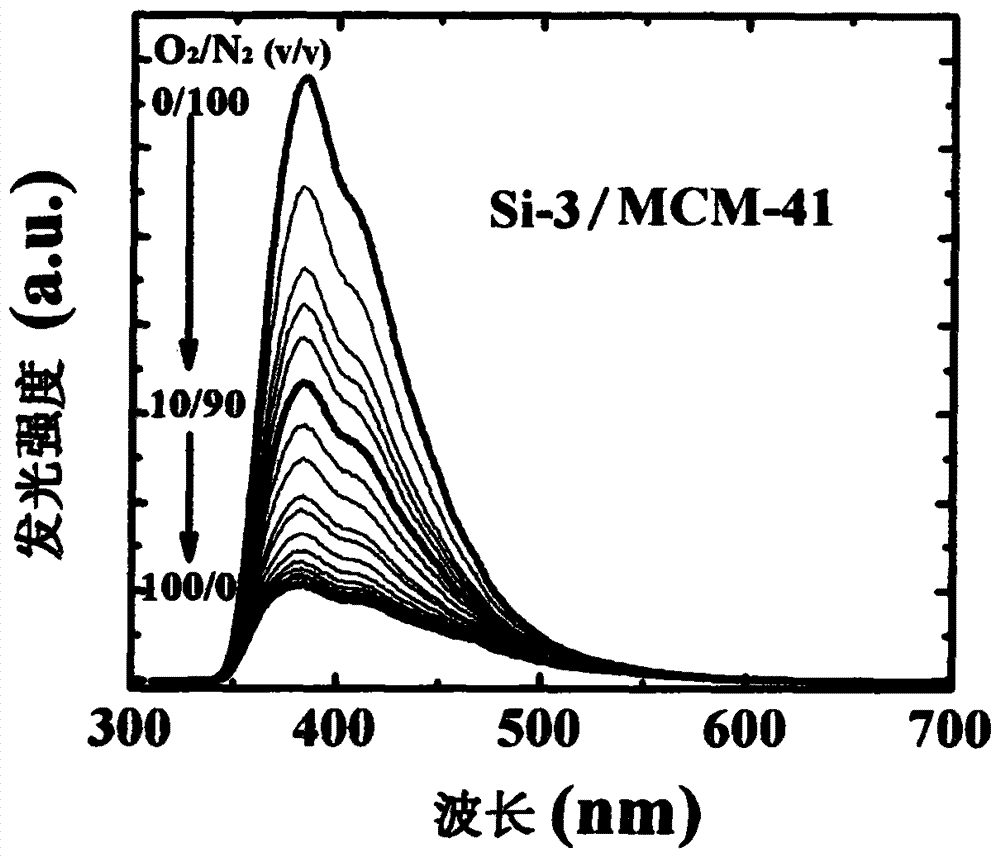A kind of optical oxygen sensing composite material without heavy metal elements and its preparation method
A composite material and oxygen sensing technology, which is applied in the field of optical oxygen sensing composite materials without heavy metal elements and its preparation, can solve the problems of heavy metal element environmental pollution, expensive transition metal phosphorescent complexes, etc., and achieve simple preparation methods Effect
- Summary
- Abstract
- Description
- Claims
- Application Information
AI Technical Summary
Problems solved by technology
Method used
Image
Examples
Embodiment 1
[0025] Embodiment 1: the synthesis of organosilicon compound Si-1 in structural formula (I)
[0026]
[0027] (1) At 25°C, add 1,4-dibromobenzene (1.18g, 5.0mmol) and 20mL THF solution into a 100mL round bottom flask under nitrogen protection, and cool the system to -120~10°C, preferably -78°C °C, slowly add 2.50 mL of n-butyllithium / n-hexane solution (2.2M, 5.5 mmol) dropwise into the flask, and the dropping time is 0.5-2.0 hours, preferably 1.0 hours. Add trimethylchlorosilane (0.63 mL, 5.0 mmol) into the flask, and continue stirring at 70°C for 10 to 36 hours, preferably 24 hours. The reaction was quenched with deionized water, extracted with dichloromethane, the organic phase was dried over anhydrous sodium sulfate, and the solvent was evaporated under reduced pressure to obtain a light yellow liquid of trimethyl(4-bromophenyl)silane. Yield: 60.0%.
[0028] (2) Weigh the trimethyl(4-bromophenyl)silane (0.50g, 2.2mmol) and 20mL THF prepared in step (1) into a 100mL rou...
Embodiment 2
[0029] Embodiment 2: the synthesis of organosilicon compound Si-2 in structural formula (I)
[0030]
[0031] (1) At 25°C, 1,4-dibromobenzene (1.18g, 5.0mmol) and 20mL THF solution were added into a 100mL round bottom flask under nitrogen protection. Cool the system to -120~10°C, preferably -78°C, slowly add 2.50mL of n-butyllithium / n-hexane solution (2.2M, 5.5mmol) dropwise to the flask, the dropping time is 0.5~2.0 hours, preferably 1.0 Hour. After adding dimethylphenylchlorosilane (0.84 mL, 5.0 mmol) into the flask, the stirring was continued at 70°C for 16-32 hours, preferably 24 hours. The reaction was quenched with deionized water, extracted with dichloromethane, the organic phase was dried over anhydrous sodium sulfate, and the solvent was evaporated under reduced pressure to obtain a light yellow liquid of dimethylphenyl (4-bromophenyl) silane. Yield: 54.2%.
[0032] (2) Weigh dimethylphenyl (4-bromophenyl) silane (0.64g, 2.2mmol) and 20mL THF prepared in step (1...
Embodiment 3
[0033] Embodiment 3: the synthesis of organosilicon compound Si-3 in structural formula (I)
[0034]
[0035] (1) At 25°C, 1,4-dibromobenzene (1.18g, 5.0mmol) and 20mL THF solution were added into a 100mL round bottom flask under nitrogen protection. Cool the system to -120~10°C, preferably -78°C, slowly add 2.50mL of n-butyllithium / n-hexane solution (2.2M, 5.5mmol) dropwise to the flask, the dropping time is 0.5~2.0 hours, preferably 1.0 Hour. Add methyldiphenylchlorosilane (1.05 mL, 5.0 mmol) into the flask, and continue stirring at 70°C for 10-36 hours, preferably 24 hours. The reaction was quenched with deionized water, extracted with dichloromethane, the organic phase was dried over anhydrous sodium sulfate, and the solvent was evaporated under reduced pressure, and the obtained solid was recrystallized with absolute ethanol to obtain methyl diphenyl (4-bromophenyl) silane White solid powder. Yield: 65.0%.
[0036] (2) Weigh the methyldiphenyl(4-bromophenyl)silane ...
PUM
 Login to View More
Login to View More Abstract
Description
Claims
Application Information
 Login to View More
Login to View More - R&D
- Intellectual Property
- Life Sciences
- Materials
- Tech Scout
- Unparalleled Data Quality
- Higher Quality Content
- 60% Fewer Hallucinations
Browse by: Latest US Patents, China's latest patents, Technical Efficacy Thesaurus, Application Domain, Technology Topic, Popular Technical Reports.
© 2025 PatSnap. All rights reserved.Legal|Privacy policy|Modern Slavery Act Transparency Statement|Sitemap|About US| Contact US: help@patsnap.com



